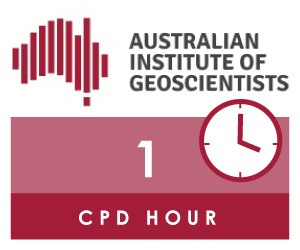| |
 “Grassroots Exploration” using Spinifex Biogeochemistry in Poorly Exposed Terrains: Discovery of a New Mineral Province in SW Queensland
“Grassroots Exploration” using Spinifex Biogeochemistry in Poorly Exposed Terrains: Discovery of a New Mineral Province in SW QueenslandThe use of spinifex as a biogeochemical vector was pioneered in Australia by CRC LEME. Spinifex is a useful species for biogeochemical exploration because its roots penetrate to depths >70 m in search of water and their acidic tips facilitated dissolution of metals from basement rocks. Metal ions subsequently migrate into the growing fronds via diffusion in the plant system. When analysed by ICPMS, observed elemental concentrations [ppm (µg/g) to ppt (pg/g)] show that the spinifex is an excellent species for target delineation.
In this presentation, I discuss results obtained in a spinifex biogeochemical study recently undertaken by HDR in the Simpson Desert, SW Queensland. It was funded by the GSQ as an “Industry Priority” initiative. The study area was chosen because Cu had been reported in RC drill core by Krucible Metals, but the underlying geology was unknown. From magnetics, the Krucible tenement appeared to straddle a terrane boundary between the eastern Arunta Block and the southern Mount Isa Block. In excess of 3000 spinifex samples were collected along a number of traverses normal to the magnetic trend.
Results of the study exceeded expectations and, from characteristic element associations, three potential mineral styles were identified:
The study also demonstrated that REE compositions of spinifex could be used infer the chondrite-normalised REE patterns of underlying rock types.
This allowed discovery of a suite of very rare Devonian age phoscorite-carbonatite intrusions (the Diamantina Alkaline Suite). These alkaline intrusions are interpreted to lie on a 2000 km long plume track extending from NSW to the NT that formed when proto-Australia migrated over the Pacific Superplume between ~444 Ma and ~365 Ma. The presence of spinifex with anomalous concentrations of PGE, REE, HFSE, Cu, P and Sc along the plume track in SW Queensland indicates that the sources of these metal signatures could represent valid exploration targets. Thus the entire region has been identified as a new mineral province in Queensland that could emerge as a destination for greenfield PGE, REE, HFSE, Cu, P, Sc and possibly diamond exploration.